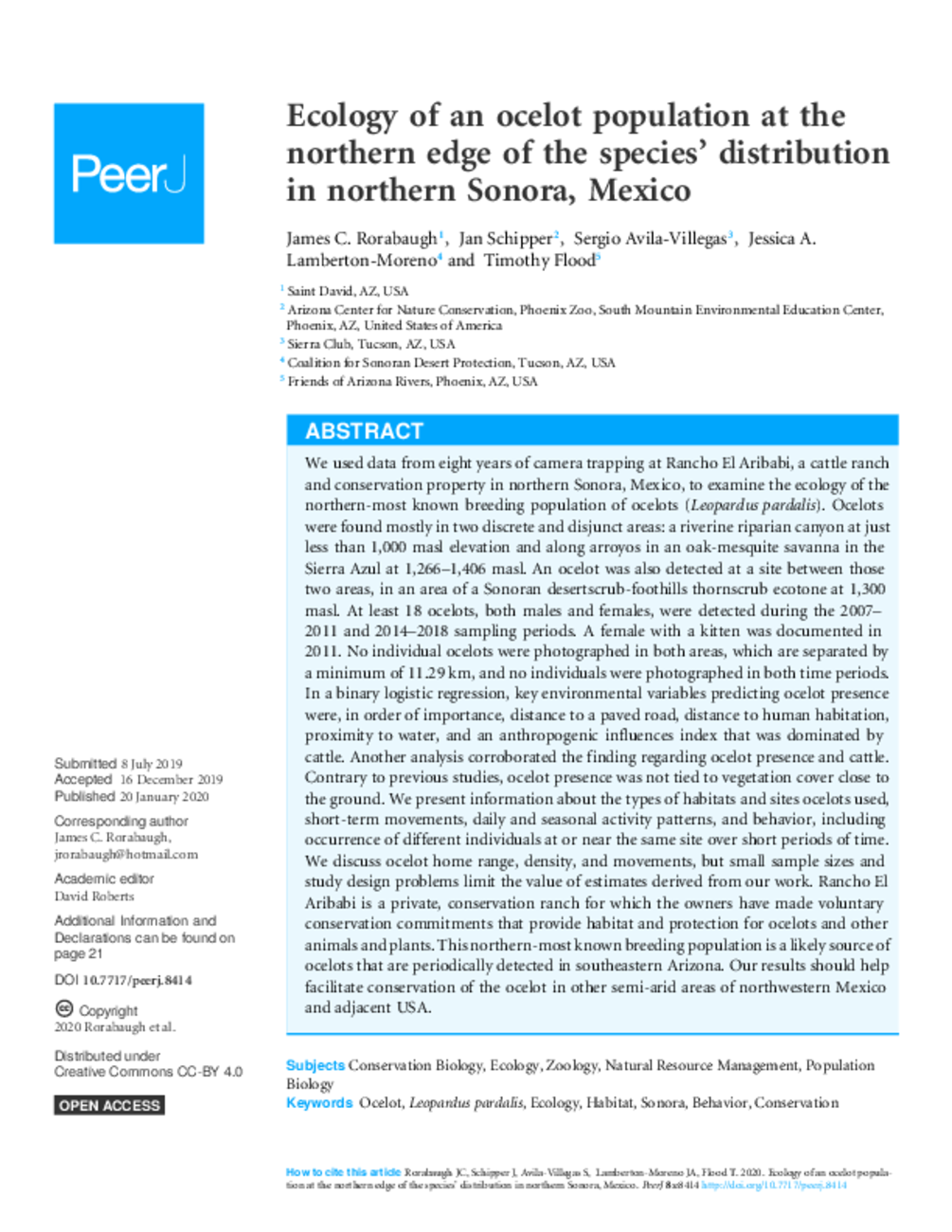Ecology of an ocelot population at the northern edge of the species’ distribution in northern Sonora, Mexico
We used data from eight years of camera trapping at Rancho El Aribabi, a cattle ranch and conservation property in northern Sonora, Mexico, to examine the ecology of the northern-most known breeding population of ocelots (Leopardus pardalis). Ocelots were found mostly in two discrete and disjunct areas: a riverine riparian canyon at just less than 1,000 masl elevation and along arroyos in an oak-mesquite savanna in the Sierra Azul at 1,266–1,406 masl. An ocelot was also detected at a site between those two areas, in an area of a Sonoran desertscrub-foothills thornscrub ecotone at 1,300 masl. At least 18 ocelots, both males and females, were detected during the 2007– 2011 and 2014–2018 sampling periods. A female with a kitten was documented in 2011. No individual ocelots were photographed in both areas, which are separated by a minimum of 11.29 km, and no individuals were photographed in both time periods. In a binary logistic regression, key environmental variables predicting ocelot presence were, in order of importance, distance to a paved road, distance to human habitation, proximity to water, and an anthropogenic influences index that was dominated by cattle. Another analysis corroborated the finding regarding ocelot presence and cattle. Contrary to previous studies, ocelot presence was not tied to vegetation cover close to the ground. We present information about the types of habitats and sites ocelots used, short-term movements, daily and seasonal activity patterns, and behavior, including occurrence of different individuals at or near the same site over short periods of time. We discuss ocelot home range, density, and movements, but small sample sizes and study design problems limit the value of estimates derived from our work. Rancho El Aribabi is a private, conservation ranch for which the owners have made voluntary conservation commitments that provide habitat and protection for ocelots and other animals and plants. This northern-most known breeding population is a likely source of ocelots that are periodically detected in southeastern Arizona. Our results should help facilitate conservation of the ocelot in other semi-arid areas of northwestern Mexico and adjacent USA.

